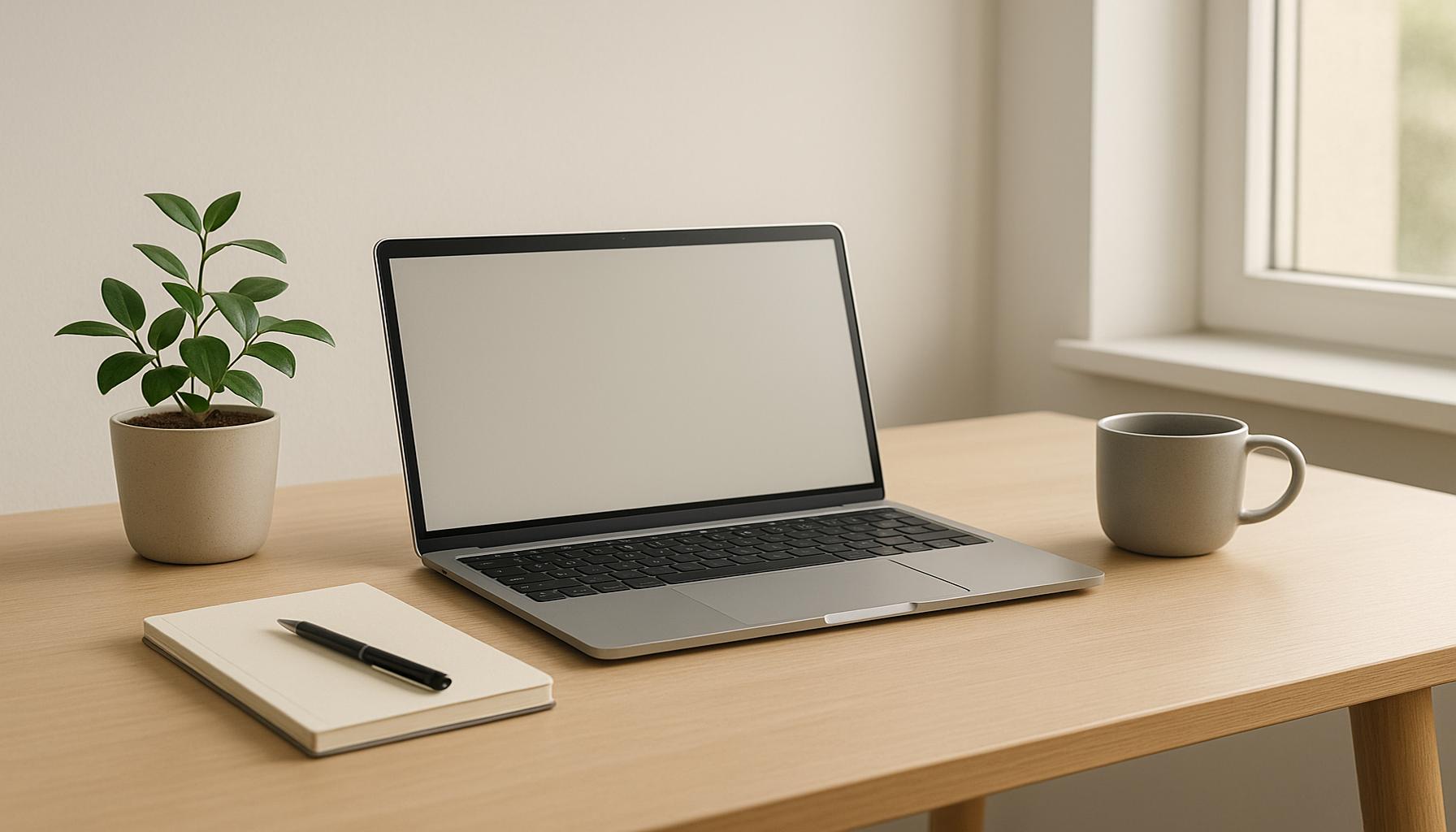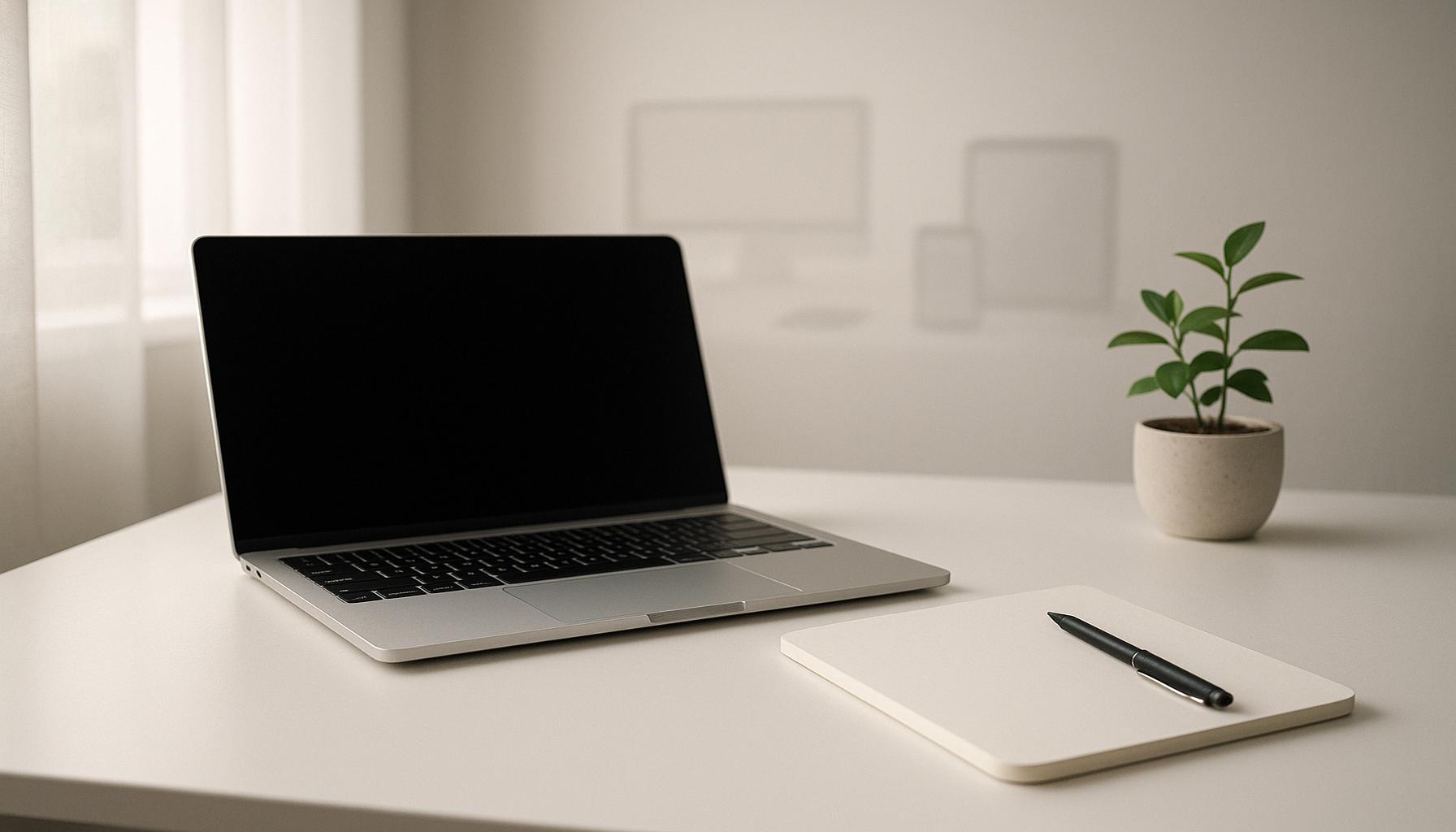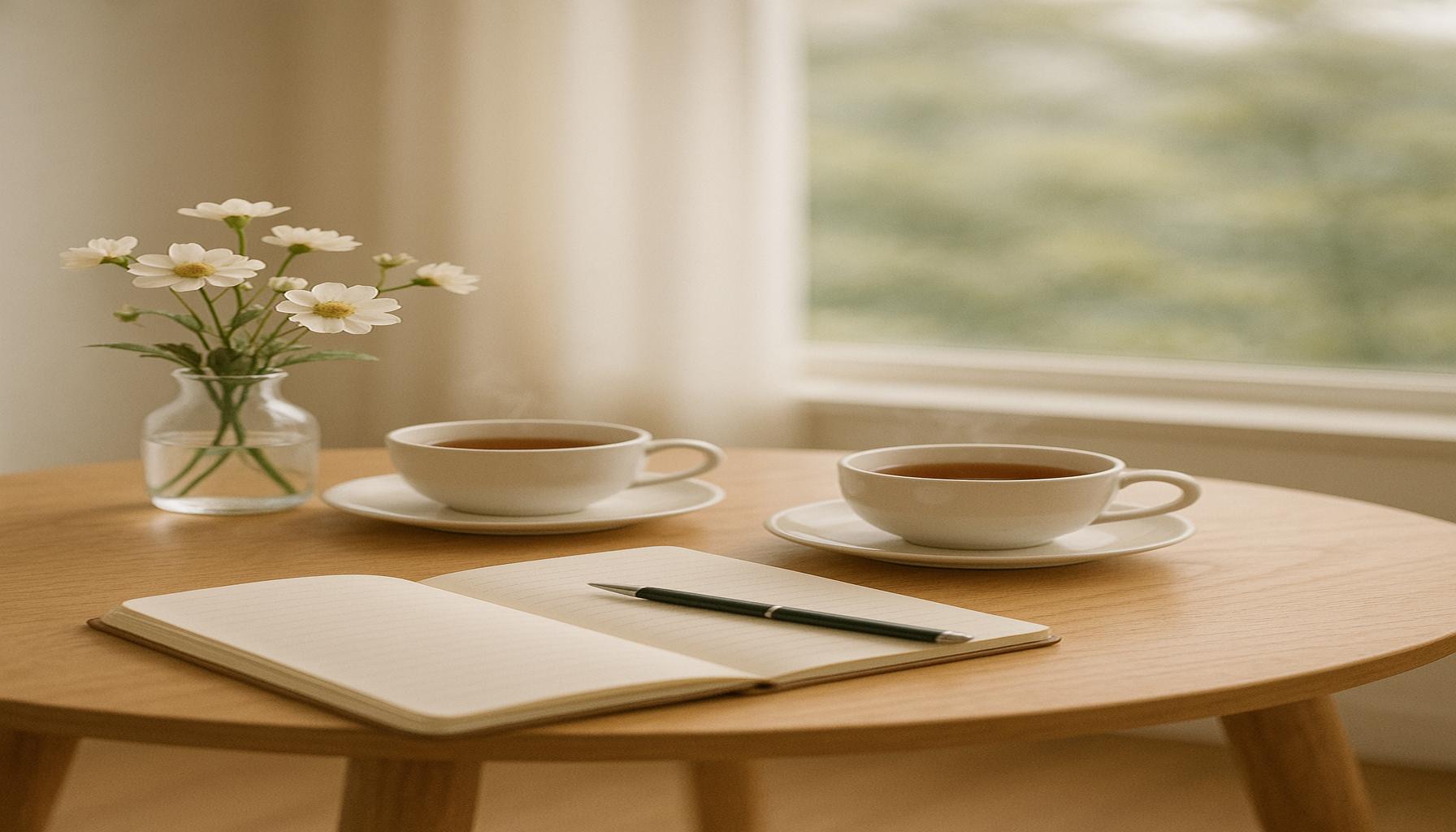Uncomplicating Space: Personal Organization Strategies for a Minimalist Lifestyle

Finding Clarity in Chaos
In today’s fast-paced world, many individuals feel overwhelmed by endless possessions, packed schedules, and a multitude of responsibilities. This state of clutter can lead to increased stress levels, anxiety, and can significantly hinder personal growth and creativity. The minimalist lifestyle offers a refreshing contrast to these societal norms, encouraging us to streamline our environments and simplify our lives for greater satisfaction and tranquility.
The Minimalist Approach
Adopting a minimalist lifestyle transcends the simple act of decluttering; it involves a fundamental shift in mindset and values. This lifestyle champions the idea that less truly can be more, urging individuals to reconsider their approach to consumption and possession. Here are some core principles that guide minimalism:
- Intentionality: This principle advocates for making conscious choices about what enters your home and life. It encourages individuals to think critically about their purchases, ensuring that each item serves a clear purpose or brings joy.
- Functionality: Instead of surrounding ourselves with decorative items that serve no practical function, minimalism urges us to select items that enhance our daily living. For example, a well-designed chair that supports our posture is far more valuable than a beautiful yet uncomfortable one.
- Mindfulness: Emphasizing experiences over material possessions can lead to a richer, more fulfilling life. This principle suggests that investing time in relationships, travel, or hobbies can provide deeper satisfaction than accumulating more things.
Steps to Uncomplicate Your Space
While the idea of transforming your living space may initially seem daunting, there are practical strategies to enable a smooth transition towards minimalism. Here are some actionable steps to consider:
- Declutter regularly: Set aside time each month to evaluate and eliminate unnecessary items. A simple rule to apply is the “one in, one out” policy. For every new item you bring home, try to remove an existing one.
- Create designated areas: Organizing your belongings based on their use and accessibility not only makes finding things easier but it also reduces the mental load associated with cluttered spaces. For example, create a specific drawer for essential documents and another for leisure reading materials.
- Embrace digital tools: Utilize technology to manage tasks, appointments, and obligations more efficiently. Apps such as Todoist or Trello can help you streamline to-do lists, while calendar apps can keep your schedule tidy and transparent.
Embarking on this journey toward a minimalist lifestyle not only creates physical space but also fosters mental clarity. The benefits often extend beyond the home, influencing various aspects of life, including work-life balance and personal well-being. As we delve deeper into personal organization strategies, you’ll uncover practical tips that could dramatically transform both your environment and mindset. Prepare to explore the art of uncomplicated living, where clarity replaces chaos and simplicity becomes your greatest ally in achieving a more intentional life.
DISCOVER MORE: Click here to find out how to cultivate serenity
Transforming Daily Habits for a Minimalist Life
To truly embrace minimalism, one must cultivate daily habits that reflect the principles of simplicity and intentionality. Our environments often mirror our mindsets; therefore, developing routines that prioritize clarity and organization is essential to transforming both personal space and mental well-being. Here are several strategies that can serve as a foundation for incorporating minimalism into everyday life:
- Start small: Attempting to overhaul your entire home in one day can be overwhelming. Instead, begin with a single drawer or closet. Focus on one area at a time to prevent burnout and maintain momentum. This method makes it easier to experience immediate gratification and encourages consistency in organizing efforts.
- Utilize storage solutions: Invest in functional storage options that align with your minimalist goals. Consider clear bins, baskets, or shelving units that can help segregate items by category while keeping your space visually appealing. This not only enhances organization but also preserves your items in a manner that reflects your commitment to simplicity.
- Set specific time limits: Decluttering can be a time-consuming task, but it doesn’t have to be daunting. Allocate a set amount of time—such as 15 or 30 minutes—each day to work on organizing a specific area. The short bursts of focused effort can lead to significant progress over time, preventing feelings of overwhelm from setting in.
- Reflect and assess: Regularly revisit the principles of minimalism in your daily life. Take a moment to assess what is truly necessary and what can be eliminated. Keeping a journal can also be useful to reflect on your relationship with your possessions and highlight any areas that may require attention.
Beyond these practical steps, understanding the emotional aspects tied to our possessions is vital. Many individuals grapple with attachment to items due to nostalgia, fear of loss, or perceived value. Recognizing these sentiments can be a catalyst for change, encouraging individuals to let go of items that no longer serve their lifestyles or emotional well-being. A poignant example can be seen in the phenomenon of “The Tidy Method,” popularized by Marie Kondo, which invites individuals to assess whether an item “sparks joy” in their lives.
The Role of Mindset
As crucial as the strategies themselves are, the mindset we adopt while practicing minimalism fundamentally shapes our experience. Embracing a mindset of abundance rather than scarcity enables a smoother transition to simplicit living. Instead of viewing reducing possessions as a loss, it can be seen as an opportunity to reclaim space and freedom, paving the way for a fresh perspective on life’s priorities. This shift in thinking allows individuals to appreciate what they have without the pressure of maintaining things out of obligation.
Incorporating these personal organization strategies will not only lead you to a more streamlined physical space but will also stimulate greater clarity of mind. As you continue this journey towards a minimalist lifestyle, remember that the essence of minimalism is about making room for what truly matters—both in your home and your life.
| Advantages | Description |
|---|---|
| Simplified Home Environment | Minimizing clutter and focusing on essentials allows for a more peaceful living space, fostering mental clarity and emotional calmness. |
| Time Efficiency | With fewer possessions to manage, the amount of time spent organizing and cleaning is significantly reduced, allowing more time for leisure activities or productivity. |
| Financial Savings | Adopting a minimalist lifestyle often leads to purchasing fewer items, thereby saving money and promoting a more financially responsible lifestyle. |
| Enhanced Creativity | With a decluttered environment, individuals may experience boosted creativity as there are fewer distractions to inhibit the flow of ideas. |
Exploring the theme of “Uncomplicating Space” yields numerous strategies geared towards achieving a minimalist lifestyle. As readers delve deeper, they will uncover the transformative impact that organization can have in enriching both mental and emotional well-being. The simplicity of space can catalyze clarity, allowing individuals to prioritize what truly matters in their lives. Furthermore, as they embrace this journey, they will recognize the countless opportunities that arise from enhanced focus and reduced distractions. Every element contributes to a harmonious existence where positivity flourishes and chaos diminishes.
DIVE DEEPER: Click here for more insights
Creating Functional Spaces: The Art of Zoning
As we delve deeper into personal organization strategies that promote a minimalist lifestyle, it’s essential to focus on the concept of zoning. Zoning refers to the practice of designating specific areas within your home for particular activities, which can greatly minimize clutter and enhance the functionality of your space. By creating intentional zones, you foster a more efficient environment that aligns with your minimalist ideals. Here are some effective zoning strategies worth considering:
- Designate activity areas: Identify spaces within your home that will serve specific functions. For instance, create a designated reading nook equipped with books, a cozy chair, and good lighting to encourage relaxation without diversions. This intentional setup not only enhances your focus but also helps keep related items together, reducing scattered belongings.
- Maximize vertical space: In the pursuit of minimalism, utilizing vertical space is essential. Install shelves that draw the eye upward, making use of walls and corners in a creative manner. This allows you to store items without occupying your floor space, thus promoting a less cluttered atmosphere. Vertical storage can transform an overwhelmed room into an organized sanctuary.
- Utilize multifunctional furniture: Invest in furniture that serves dual purposes, such as a coffee table with hidden storage or a sofa bed for guests. This approach facilitates an adaptable living space while minimizing the number of items you own. Functionality becomes a key priority, making it easier to maintain a streamlined environment.
Furthermore, understanding how your daily routines intersect with spatial organization can significantly ease your transition to minimalism. For many, morning rituals can become chaotic when items are misplaced or unavailable. By clearly defining zones for essentials like clothing, grooming supplies, and breakfast areas, individuals can flow seamlessly through their routines without unnecessary disruptions, setting a positive tone for the day ahead.
The Digital Dimension of Minimalism
Beyond physical spaces, adopting a minimalist approach in the digital realm is equally important. In an age of information overload, decluttering your digital life can free you from mental clutter and stress. Begin with these practical steps:
- Organize your files: Just like physical paperwork, digital files can accumulate quickly. Regularly assess your documents, images, and downloads, and create segmented folders for easy access. Deleting what is no longer needed not only simplifies your digital space but also streamlines your workflow.
- Limit notifications: Constant alerts from apps can fragment your attention and create a chaotic environment. Consider silencing unnecessary notifications from your phone and social media apps to promote a more focused mindset.
- Evaluate subscriptions: Subscriptions to newsletters and streaming services often lead to a feeling of overwhelm. Regularly revisiting what you subscribe to can help eliminate services that no longer get used, simplifying your decision-making processes moving forward.
Incorporating these strategies will not only cultivate a sense of organization throughout your personal spaces but also foster a more sustainable lifestyle that champions minimalism. By thoughtfully zoning your environments and applying similar principles to your digital life, you can create a balanced atmosphere that reflects your ideals and aspirations.
DISCOVER MORE: Click here to enhance your daily efficiency
Conclusion: Embracing Minimalism for a Simplified Life
In the journey towards a minimalist lifestyle, the impact of personal organization strategies cannot be overstated. By understanding the importance of zoning your physical spaces and also applying similar concepts in the digital realm, you can create an environment that not only feels streamlined but also promotes greater clarity and purpose. The strategies discussed, from designating activity areas to utilizing multifunctional furniture, serve as building blocks for a more intentional way of living.
Moreover, embracing this minimalistic approach can lead to profound changes beyond mere aesthetics. The act of decluttering our physical and digital spaces fosters mental clarity, reducing stress and enabling a more focused lifestyle. As we navigate through ever-busy lives, implementing these organization strategies can yield a sanctuary that reflects our values and aspirations.
Each step taken towards minimalism, no matter how small, contributes to a holistic transformation that champions sustainability and simplicity. By committing to regular assessments of both your physical belongings and digital presence, you’re not just cultivating a more organized life, but you’re opening the door to enriching experiences unhindered by clutter.
In essence, simplifying your space becomes synonymous with simplifying your life. As you embark on this rewarding journey, keep in mind that the minimalist lifestyle is not merely about having less; it’s about making room for more of what truly matters. Discovering what values and activities bring you joy will ultimately guide you toward a lifestyle where functionality and serenity coalesce seamlessly.


